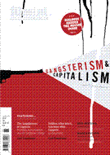
Film International
Scope & Guideline
Unveiling the Social Significance of Cinematic Art.
Introduction
Aims and Scopes
- Cinematic Analysis and Critique:
The journal publishes in-depth analyses of films across various genres, focusing on narrative techniques, visual aesthetics, and thematic content. This includes examinations of classic and contemporary films, as well as discussions on the evolution of cinematic language. - Cultural and Societal Reflections:
Many articles reflect on how films engage with cultural identities, societal issues, and historical contexts. This includes explorations of representation, identity politics, and the impact of film on public discourse. - Interdisciplinary Approaches:
Film International promotes interdisciplinary research, integrating perspectives from sociology, philosophy, gender studies, and other fields to enrich the understanding of cinematic texts and contexts. - Global Cinema and Diversity:
The journal emphasizes the importance of global cinema, highlighting films from diverse cultures and the unique narratives they offer. It seeks to address underrepresented voices and perspectives in the film industry. - Innovative Film Practices:
Discussion of new and emerging practices in filmmaking, including technological advancements, independent cinema, and the role of digital media in reshaping the film landscape.
Trending and Emerging
- War and Conflict in Film:
With recent titles addressing the war in Ukraine and its cinematic representation, there is a growing interest in how film articulates themes of conflict, trauma, and resilience. This trend is significant in understanding the role of cinema in reflecting and shaping societal responses to contemporary crises. - Identity and Representation:
There is an increasing focus on discussions around identity, including race, gender, and sexuality, as seen in analyses of various films and series. This trend indicates a heightened awareness of the importance of diverse narratives and the complexities of representation in cinema. - Exploration of New Media and Technology:
Emerging discussions surrounding the impact of technology on filmmaking and storytelling, especially in the context of digital platforms and streaming services, reflect the changing landscape of how films are produced and consumed. - Cinematic Memory and Nostalgia:
Recent publications show a trend towards exploring themes of memory and nostalgia in film, particularly how past cinematic works influence contemporary storytelling. This theme underscores the importance of historical context in understanding current cinematic practices. - Ethics and Social Responsibility in Film:
Themes related to ethical storytelling, representation, and the social responsibilities of filmmakers are increasingly prominent. This trend highlights the growing recognition of the power of film to influence social change and the importance of responsible narratives.
Declining or Waning
- Traditional Film Genres:
There has been a noticeable decline in articles focusing solely on traditional film genres such as classic Westerns or straightforward romantic comedies. This shift may indicate a move towards more complex narratives and genre-blending in contemporary cinema. - Historical Film Analysis:
Although historical analyses remain important, fewer articles are concentrating on detailed explorations of film history or retrospectives of specific movements. This could point to a preference for contemporary issues or newer cinematic practices. - Conventional Film Theory:
The journal has seen a decrease in the publication of pieces that adhere strictly to conventional film theory frameworks. This might suggest a move towards more fluid and innovative theoretical approaches that challenge established paradigms.
Similar Journals
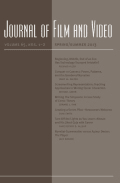
JOURNAL OF FILM AND VIDEO
Innovating Narratives in Film and Video ResearchThe JOURNAL OF FILM AND VIDEO, published by University of Illinois Press, is a pivotal academic platform that delves into the intricate intersections of film, video, and media studies. With a notable ISSN of 0742-4671 and E-ISSN 1934-6018, this journal has established itself as a significant contributor to the visual arts and performing arts field, currently positioned in Q3 of its category as per the 2023 quartiles. Spanning from 2002 to 2024, it presents a comprehensive array of research, critiques, and theoretical discussions that advance scholarly discourse in film and video. The journal encourages contributions that explore innovative narratives and methodologies, catering to a diverse readership of researchers, professionals, and students alike. While it maintains a traditional subscription model and is not open access, its impact is amplified through its Scopus ranking, holding the 323rd position out of 667 in the visual arts and performing arts category. With its commitment to fostering critical conversations and promoting scholarly excellence, the JOURNAL OF FILM AND VIDEO remains an essential resource for those invested in the study and understanding of film and media.
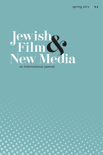
Jewish Film & New Media-An International Journal
Celebrating Innovation in Jewish Film Studies and Media AnalysisJewish Film & New Media: An International Journal, published by Wayne State University Press, serves as a crucial platform for scholars and practitioners within the realms of Film Studies, Jewish Studies, and Media Studies. Since its inception, the journal has explored the intersection between Jewish culture and cinematic representation while also addressing contemporary media narratives. With an ISSN of 2169-0324 and E-ISSN 2169-0332, it is indexed in major databases, showcasing solid rankings in various disciplines, including a commendable Q2 rank in Visual Arts and Performing Arts. Despite its current Q4 categorizations in Anthropology and Communication, the journal is noted for its engaging contributions that sow rich discussions about Jewish identity, filmic expression, and media representation. Researchers and students alike benefit from the journal’s wealth of interdisciplinary scholarship, which spans converged years from 2013 to 2017 and 2019 to 2022, ensuring a robust timeline of critical inquiry. As an essential resource for understanding the nuances of Jewish film and new media, this journal occupies a unique niche, inviting contributions that push the boundaries of current academic dialogue.

Moving Image
Advancing Scholarship in Moving ImagesMoving Image is a distinguished academic journal published by University of Minnesota Press, dedicated to the exploration and critical analysis of visual culture. With an ISSN of 1532-3978 and an E-ISSN of 1542-4235, this journal plays a vital role in advancing scholarship in the fields of Conservation, Visual Arts, and Performing Arts, offering insights from its notable publication history from 2013 to 2019 and again from 2021 to 2022. While it currently does not offer open access options, the journal is recognized as a crucial platform for disseminating research, reflected in its rankings—#442/667 in Visual Arts and Performing Arts and #87/103 in Conservation according to Scopus. Despite its placement in the Q4 quartile for both fields, Moving Image remains a key resource for scholars, students, and practitioners interested in the intricate dynamics of moving images in contemporary culture. Its commitment to fostering dialogue and innovation in visual studies ensures its relevance and influence within the academic community.
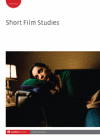
Short Film Studies
Bridging Theory and Practice in Short Film AnalysisShort Film Studies is a leading journal dedicated to the exploration and analysis of short films, published by INTELLECT LTD. Since its inception in 2014, this esteemed journal has carved a niche within the realm of Visual Arts and Performing Arts, providing a critical platform for scholars, practitioners, and enthusiasts alike to engage with the unique characteristics and cultural implications of short film as a distinct medium. Despite its current position in the Q4 quartile, the journal is steadfast in its commitment to enhancing scholarly discourse and understanding in this dynamic field. With a growing repository of research, Short Film Studies aims to bridge theoretical insights with practical examination, facilitating a deeper appreciation of cinematic innovation. Its accessibility through conventional channels underscores its significance, should you wish to engage with cutting-edge research and trends. As a vibrant component of the academic landscape, this journal promises valuable contributions that resonate with researchers, professionals, and students pursuing knowledge of filmic artistry.

Journal of Italian Cinema and Media Studies
Celebrating the Cultural Impact of Italian Film and MediaThe Journal of Italian Cinema and Media Studies, published by INTELLECT LTD, is a premier academic journal dedicated to the exploration and critical analysis of Italian cinema and media. Since its inception in 2013, the journal has contributed significantly to the discourse surrounding the intersections of film, culture, and society, making it a vital resource for researchers and professionals alike. With an impressive span of converged years through 2024 and categorized in various quartiles, such as a Q1 ranking in Visual Arts and Performing Arts, the journal stands out in its field. Although it does not currently offer open access, the rigorous scholarship it publishes is accessible to a wide audience, contributing to ongoing dialogues in communication and cultural studies. The journal's impact is further reflected in its Scopus rankings, positioning it within the 64th percentile in Visual Arts and Performing Arts and the 21st percentile in Communication. As a critical avenue for scholarly exchange and creative inquiry, the Journal of Italian Cinema and Media Studies is essential for anyone engaged in the study of media, culture, and the arts.
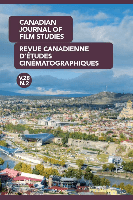
Canadian Journal of Film Studies-Revue Canadienne d Etudes Cinematographiques
Innovating Critical Discourse in Film StudiesCanadian Journal of Film Studies-Revue Canadienne d'Études Cinématographiques is a distinguished publication dedicated to the exploration of film studies within the context of Canadian cinema and global visual arts. Published by University of Toronto Press Inc., this journal offers a platform for innovative and critical scholarship, having achieved a notable Q2 ranking in the Visual Arts and Performing Arts category for 2023, with an impressive Scopus rank of 207 out of 667, positioning it in the 68th percentile among peers. With a continuous publication record since its established years from 1998 to 2001 and 2004 to 2024, it has become an essential resource for researchers, professionals, and students interested in the evolving landscape of film and cinema. The journal not only addresses theoretical perspectives but also engages with contemporary practices, thereby fostering a deeper understanding of cinematic arts. Despite not offering open access, it remains a vital repository of knowledge for those seeking to advance their studies and contribute to the discourse in film studies.

CINEFORUM
Fostering Critical Discourse in Cinematic CreativityCINEFORUM is a distinguished journal published by the FEDERAZIONE ITALIANA CINEFORUM, focusing on the vibrant field of Visual Arts and Performing Arts. With an ISSN of 0009-7039, this journal serves as a significant platform for researchers and practitioners interested in critical discussions and analyses pertaining to cinema and performance. Although coverage in Scopus discontinued in 2020, CINEFORUM has established its standing with a category ranking in the Q4 quartile for Visual Arts, reflecting its niche yet passionate readership in the arts community. Based in Bergamo, Italy, the journal aims to foster a deeper understanding of cinematic and performative texts, offering insights and scholarly contributions that enhance the discourse within these artistic domains. Catering to an audience that includes researchers, professionals, and students, CINEFORUM remains an essential resource for those looking to explore the intersection of theory and practice in cinema and performing arts.

Hrvatski Filmski Ljetopis
Unveiling the Evolution of Film in Croatia.Hrvatski Filmski Ljetopis, published by the Croatian Film Clubs Association, serves as a pivotal academic journal in the field of film studies, celebrating and analyzing the rich cinematic heritage of Croatia and beyond. With an ISSN of 1330-7665, this journal caters to researchers, practitioners, and students who are passionate about the art of filmmaking, encompassing both theoretical discourse and practical implications. Although it is not currently available as an open-access publication, its curated content is of significant value to anyone interested in the evolution, critique, and history of film in a Croatian context, having previously been indexed in Scopus until coverage was discontinued. The journal operates out of Zagreb, Croatia, at the Croatian Film Clubs Association headquarters, and aims to foster scholarly dialogue while contributing to the broader field of national and international cinematography.

Journal of British Cinema and Television
Exploring the Rich Tapestry of British Screen CultureJournal of British Cinema and Television, published by Edinburgh University Press, is a leading academic journal that explores the dynamic interplay between British cinema and television within the context of cultural studies. With an ISSN of 1743-4521 and E-ISSN of 1755-1714, this journal provides a platform for scholarly discourse, enabling researchers, professionals, and students to engage with critical analyses of screen media and its socio-political impact. As a Q3 journal in Communication and a Q1 journal in Visual Arts and Performing Arts for 2023, it occupies an influential position, particularly in the Arts and Humanities, where it ranks in the 90th percentile. The journal's scope encompasses a wide range of topics, from historical perspectives to contemporary practices in British visual culture, making it essential reading for anyone interested in the evolution and significance of screen studies in the UK. While it is not an open-access publication, the rigorous peer-review process ensures high academic standards and contributes to its esteemed reputation in the field. As it continues to converge from 2004 to 2024, the Journal of British Cinema and Television remains a vital resource for those seeking to deepen their understanding of British media and its global resonance.

Transnational Screens
Exploring the Global Canvas of Visual and Performing ArtsTransnational Screens is a premier academic journal published by Taylor & Francis Ltd, focusing on the dynamic intersections of visual arts, performing arts, and communication in a globalized context. Since its inception, the journal has garnered significant recognition, featuring in the Q1 category for Visual Arts and Performing Arts and Q3 for Communication as of 2023, reflecting its influential contributions to these fields. With a Scopus ranking placing it in the 78th percentile in Visual Arts and Performing Arts, this journal serves as a vital platform for researchers, professionals, and students aiming to explore the implications of transnational narratives in contemporary media and artistic practices. The journal is accessible to a diverse readership and promotes open dialogue through its commitment to publishing innovative and interdisciplinary research from 2020 to 2024. As a key resource for understanding the complexities of transnational screens, it invites submissions that push the boundaries of traditional scholarship and engage with pressing global issues through the lens of the visual and performing arts.